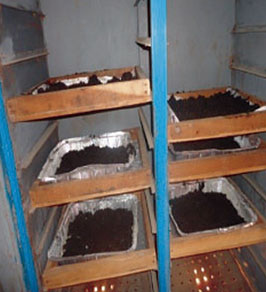Prototypes of equipment for the processing of local raw materials and the production of animal feed
Abstract
In the production process, one of the most expensive elements is the acquisition of equipment. In order to lower costs and offer alternatives more in line with the producer's economy, the National Institute for Agricultural Research (INIA) in the state of Barinas has managed to design and adapt available technologies to use second-rate materials and scraps in their construction. .
On the other hand, the country has promoted the installation of balanced feed plants for animals (ABA) with conventional food production structures that require large-scale equipment, higher performance, more demanding in use of electrical energy, and consumption of large volumes of raw material, to be able to process them and make food for animals. In addition, they use elements that compete with human consumption such as imported grains and raw materials, such is the case of soybeans, however, these plants have not achieved their optimal operation and therefore do not solve the problem.
In this sense, to help small producers with the problem of food, it has been adapting and building prototypes with reuse materials for those who cannot acquire high-cost equipment and who can also use non-traditional, high-value raw materials nutritious, which conventional equipment cannot use.
To do this, an artisanal unit for the processing and production of food formulated for animal species is proposed in a practical, simple and appropriate way for small producers, coupled to four equipment necessary for food production such as: raw material dryer, Mincer mill to convert all the dehydrated material into flour, mixer to join the components of the formula to be elaborated, feed pelletizer for specific species such as birds, pigs, fish and rabbits; and a dryer to extract moisture from the food, which will later be stored and used by the animal species.
The adoption of these technologies with the use of these artisanal prototypes allows the elaboration of formulated food for animals, using local raw materials, harvest residues that are burned or wasted; it drives the local economy by placing its crops in the plant; generates jobs, makes production systems more efficient, expands plant and animal production areas, generates income for families and improves health by permanently consuming animal protein, lowers production costs for producer and consumer. In short, it presents new local business opportunities, breaks with the monopoly, provides jobs and strengthens family nutrition, as well as the development of the territory in general and contributes to the country's food security and sovereignty.
References
Estrella, F. y C. Fonseca. 2009. Repotenciación, construcción, montaje y pruebas de una planta de balanceado de la comunidad Valle del Angú provincia de Pastaza. 127 p.
Sheider S. 2015. Agricultura familiar y las estrategias de desarrollo rural territorial. Aspectos conceptuales de la agricultura familiar en América Latina – antecedentes, defi nición y desarrollo. Universidad Federal de Río Grande do Sul/Brasil. IICA. San José, Costa Rica. 23 p.


